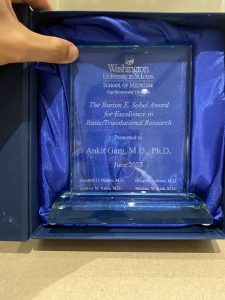New Greenberg lab preprint in collaboration with the Garcia and Lavine labs
Familial dilated cardiomyopathy (DCM) is frequently caused by autosomal dominant point mutations in genes involved in diverse cellular processes, including sarcomeric contraction. While patient studies have defined the genetic landscape of DCM, genetics are not currently used in patient care, and patients receive similar treatments regardless of the underlying mutation. It has been suggested that a precision medicine approach based on the molecular mechanism of the underlying mutation could improve outcomes; however, realizing this approach has been challenging due to difficulties linking genotype and phenotype and then leveraging this information to identify therapeutic approaches. Here, we used multiscale experimental and computational approaches to test whether knowledge of molecular mechanism could be harnessed to connect genotype, phenotype, and drug response for a DCM mutation in troponin T, deletion of K210. Previously, we showed that at the molecular scale, the mutation reduces thin filament activation. Here, we used computational modeling of this molecular defect to predict that the mutant will reduce cellular and tissue contractility, and we validated this prediction in human cardiomyocytes and engineered heart tissues. We then used our knowledge of molecular mechanism to computationally model the effects of a small molecule that can activate the thin filament. We demonstrate experimentally that the modeling correctly predicts that the small molecule can partially rescue systolic dysfunction at the expense of diastolic function. Taken together, our results demonstrate how molecular mechanism can be harnessed to connect genotype and phenotype and inspire strategies to optimize mechanism-based therapeutics for DCM.
Preprint can be found here.
New Greenberg lab publication, lead by Dr. Ankit Garg, looking at mutations in skeletal muscle actin causing cardiomyopathy
Skeletal muscle actin mutations are well-known to cause skeletal myopathies, but their role in cardiomyopathies have been controversial as skeletal muscle actin is only expressed at modest levels in the heart. Here, we demonstrate that a skeletal muscle actin mutation potently causes multiple defects in actin function at the atomic and molecular scales, and it functions in a dominant fashion, leading to cardiomyocyte contractile defects. Our results establish how skeletal muscle actin mutations may cause cardiomyocyte dysfunction and lay the foundation for future studies of the role of skeletal muscle actin in cardiomyopathy. The paper can be found here.
Congratulations to all of the authors, including our collaborators: Drs. Silvia Jansen, Rui Zhang, and Kory Lavine.
New collaborative paper with Greenberg lab contributions looking at post-translational modifications that contribute to the regulation of skeletal muscle contraction
The preprint can be found here. Thank you to Gretchen Meyer and our other collaborators for including us.
New collaborative Greenberg Lab publication with the Hinson lab on titin truncation variants
Congratulations to all of the authors. The publication can be found here.
Congratulations to Dr. Ankit Garg!
Dr. Garg, a postdoc in the lab started a new position at Johns Hopkins and received a great score on his K08 grant from NHLBI!
New Publication with Dr. Brent Scoitt
Our latest publication is “Multiscale biophysical models of cardiomyopathies reveal complexities challenging existing dogmas”. Here, we describe how experimental and computational biophysical tools are being harnessed to study cardiomyopathies and how they are revealing new insights into the disease pathogenesis that challenge existing models. The article can be found here.
New Greenberg Lab Publication with Dr. Ankit Garg
New article with Dr. Ankit Garg, “Assessing Cardiac Contractility From Single Molecules to Whole Hearts”. We describe how multiscale tools can be harnessed to reveal new insights into heart failure. The article can be found here.
Congratulations Dr. Ankit Garg
Dr. Ankit Garg won the Sobel Award for Basic and Translational Research.

New Greenberg lab publication looking at the mechanics and kinetics of cardiac myosin working stroke
This work, lead by first authors Sarah Clippinger-Schulte and Brent Scott, shows that regulatory proteins in cardiac muscle act via a steric blocking mechanism at physiological ATP concentrations. These proteins do not affect myosin’s mechanics or load dependence.
Interestingly, we see that regulatory proteins tune the kinetics of cardiac myosin’s interactions with the thin filament at low, non-physiological ATP concentrations, suggesting biophysical mechanisms that cannot be explained using conventional models.
The behavior of cardiac myosin interacting with regulated thin filaments is different from other regulated actomyosin systems where these proteins can tune myosin’s mechanics and kinetics, highlighting the diverse roles of regulatory proteins in the cell.
The paper can be found here.